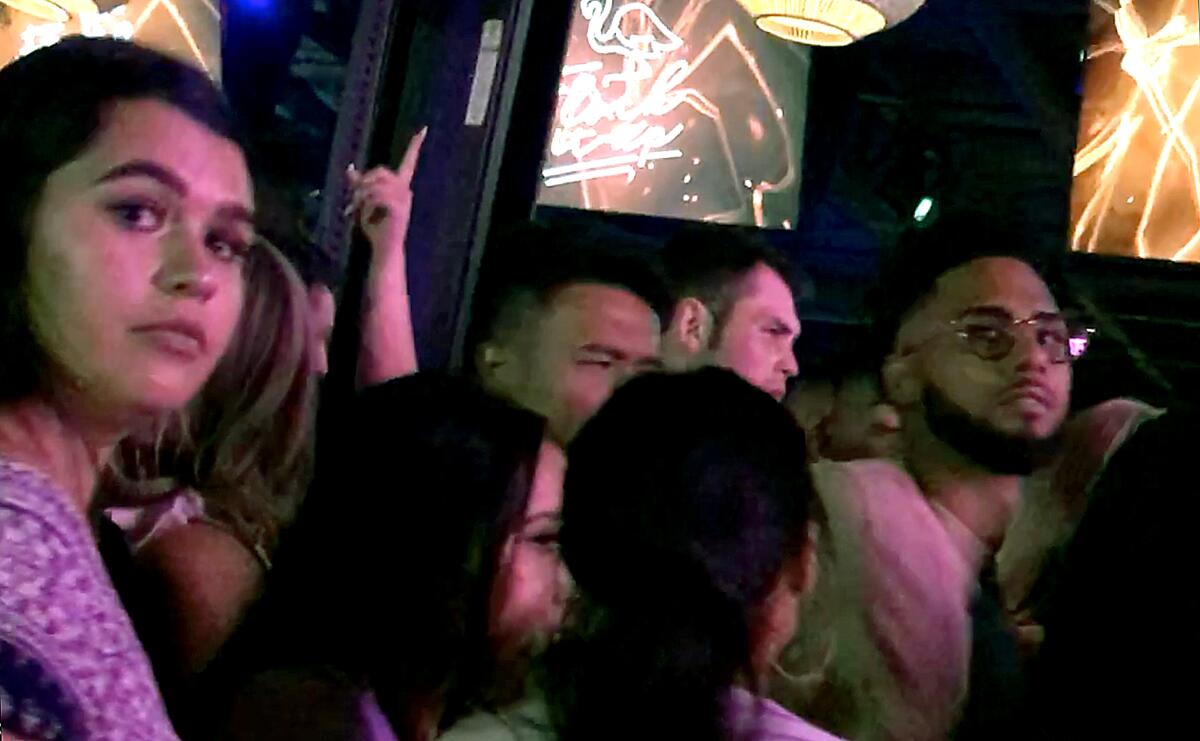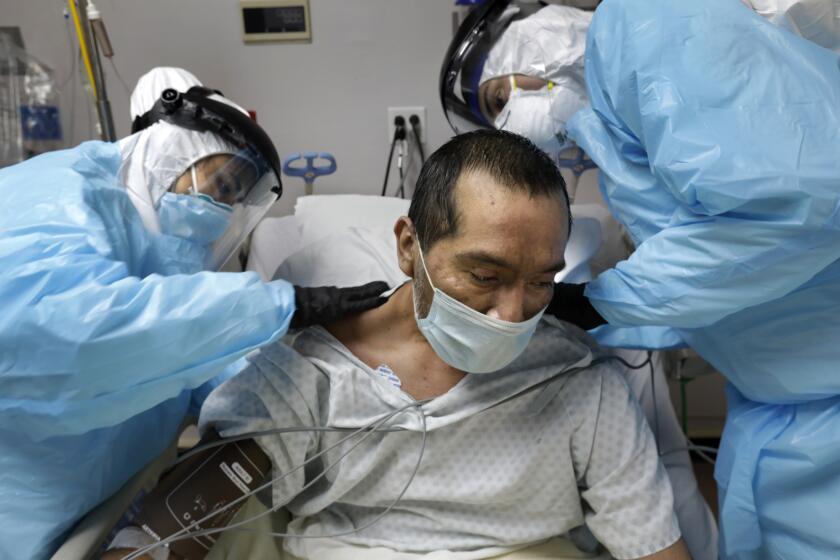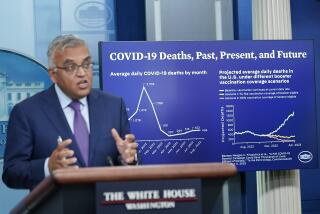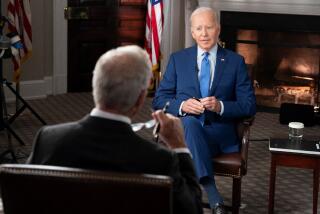Column: We’re turning into two Americas: Masked and unmasked

- Share via
WASHINGTON — When the coronavirus began scything through America’s cities in March, we were warned to steel ourselves for a terrible wave of deaths. But we were reassured that if we wore masks, washed our hands and stuck to social distancing, the disease curve would flatten and decline.
That’s not what’s happening. The curve flattened, all right, but the decline has slowed to a crawl.
In at least half a dozen states — Arizona, Florida, Texas, Arkansas and North and South Carolina — the number of cases is rising steeply. It’s up in nearly 20 other states, including California, as well. More than 20,000 people are dying every month from COVID-19.
By October, according to a forecasting model once used by the White House, total U.S. deaths could top 200,000, a sharp increase over its previous projection.
“The first wave still isn’t over,” Ashish Jha, director of Harvard’s Global Health Institute, told me. “We flattened the curve, and then we lost interest.... It’s understandable that people want to be done with it. But the virus is not done with us.”
COVID-19 has killed more than 100,000 people in the U.S., but some are more vulnerable than others. These charts show how Americans have been affected.
At this rate, a second wave of infections — the one that’s long been forecast for flu season this fall — could arrive before the first wave ever ends.
Several things went wrong. But the main problem is this: As a nation, we are flunking a test of self-restraint. Instead of states reopening slowly and carefully in accordance with public health guidelines, many are reopening regardless of the risk to people’s health.
In April, White House officials set out four conditions a state should meet before it eases social distancing rules: a declining number of infections, a declining rate of positive tests, a robust testing system for health workers, and enough hospital capacity to handle a surge.
Arizona hasn’t met any of those standards, but it’s reopening anyway — including allowing indoor nightclubs to operate. In the first half of the month, its COVID-19 cases soared 102%.
According to one theory, Arizona’s hot summer will result in more infections, not fewer — because the searing desert heat drives people indoors. Maybe reopening casinos in Las Vegas wasn’t such a great idea after all.
Do businesses and their employees deserve a chance to get back to work? Of course they do. But are crowded bars and nightclubs, prime locations for the virus to spread, really an essential part of Arizona’s economy?
Similar stories have come from Florida, which recorded its highest one-day count of new cases on Tuesday — plus 55 deaths, the most of any state for the day.
Or Texas, which also reported a new high of cases, and where Gov. Greg Abbott — who had championed the state’s rapid reopening — scolded young people for not wearing masks and pleaded with citizens to “stay at home.”
The problem isn’t limited to the Sun Belt. In the past week, the governors of Oregon and Utah paused their states’ reopenings, and New York’s Andrew Cuomo warned that he might follow suit.
But there’s an added political problem in many Southern states, because their governors insisted that they could reopen safely and staked their reputations on the outcome.
“We’re starting to see a tale of two different countries,” Jha said, with states that reopened slowly and carefully, and states that reopened quickly and heedlessly.
The problem isn’t the young people who heard “reopening” and crowded mask-free into restaurants and bars after months of being cooped up at home.
It’s the leaders — from the White House to the statehouses — who told them it was OK to do so.
To listen to President Trump, the pandemic is already over — and he ended it just in time for the November election.
“We were able to close our country, save millions of lives, open,” Trump said last week. “And now the trajectory is great.”
As a sign of his confidence, he’s scheduled his first campaign rally in three months this Saturday in an indoor hockey arena that seats 19,000. It’s in Tulsa, Okla., another state that hasn’t met the White House criteria for reopening.
Through his own behavior — refusing to wear a mask, failing to stay six feet from the people around him, and promoting an indoor rally for supporters (who had to sign waivers saying they would not sue the Trump campaign if they got COVID-19) — the president is making clear he doesn’t care whether anyone follows the public health guidelines.
So it’s hard to fault anyone, young or old, who follows his cue.
“The government has been handing out a complicated message,” Keith Humphreys, a professor of psychiatry at Stanford, told me. “We’re asking people to open up as if the pandemic were over — while telling them that they still need to be careful. That doesn’t work; people want to hear one clear message. It’s natural for a lot of them to go for the simple message that it’s over and life can go back to normal.”
“If the president had consistently worn a mask, it would have made a difference,” he added. “If he had enforced social distancing at the podium, it would have made a difference. That was a big missed opportunity.”
The irony is that most of the public was willing to undergo more hardship to end the pandemic — and still is.
An Axios-Ipsos poll this week found that 60% of Americans say they’re willing to stick with social distancing for another year or more, if needed; 77% say they wear a mask at least some of the time when they leave their homes. The scofflaws are a minority.
But the president and too many governors aren’t taking advantage of their citizens’ good sense.
It will be a tragedy if the United States, which already leads the world in deaths from COVID-19, ends the year without having tamed the virus — but that’s where we’re headed. Not only a tragedy; a national shame.
More to Read
Get the L.A. Times Politics newsletter
Deeply reported insights into legislation, politics and policy from Sacramento, Washington and beyond. In your inbox three times per week.
You may occasionally receive promotional content from the Los Angeles Times.












